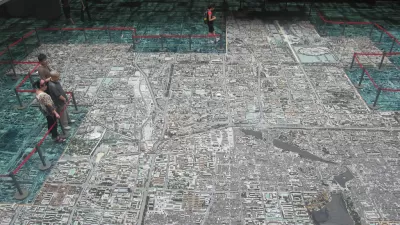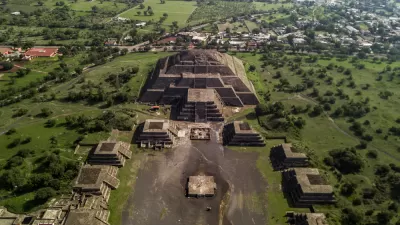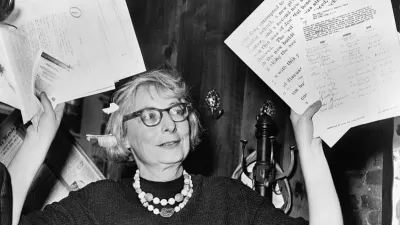The Guardian Cities details how the Kaogong Ji brought an ancient order to the sprawling city of Beijing.

Oliver Wainwright explains the millennia spanning significance of the Kaogong Ji, "one of the oldest examples of urban planning guidance in the world," and the document that shaped the beginnings of Beijing as it exists today.
In establishing the fundamental layout of the new capital, the Ming [dynasty] reached for a suitably weighty touchstone, drawing on the teachings of the Kaogong Ji (roughly translated as “regulations of construction”), a text dating from the fifth century BC; part of the Rites of Zhou, an ancient Confucian manual of bureaucracy and organisational theory.
Wainwright explains how the Kaogong Ji influenced the plan for the city:
As one of the oldest examples of urban planning guidance in the world, the Kaogong Ji covers everything from how to determine north-south orientation when planning a new city (stick a pole in the ground and watch its shadow), to dictating the specific dimensions for local, regional and national capitals.
And as one more example of the philosophy and influence of the Kaogong Ji:
The effect is no accident: Beijing was conceived as a diagram of an organised, harmonious society, designed to bind the citizens together in bricks and mortar under the supreme rule of the emperor. It was to be an expression of absolute power like no other city in the world.
Wainwright provides a thorough and detailed examination, which is recommended reading for anyone interested in the history of planning and planning outside the traditional European sphere of influence.
FULL STORY: Story of cities #4: Beijing and the earliest planning document in history

Study: Maui’s Plan to Convert Vacation Rentals to Long-Term Housing Could Cause Nearly $1 Billion Economic Loss
The plan would reduce visitor accommodation by 25,% resulting in 1,900 jobs lost.

North Texas Transit Leaders Tout Benefits of TOD for Growing Region
At a summit focused on transit-oriented development, policymakers discussed how North Texas’ expanded light rail system can serve as a tool for economic growth.

Why Should We Subsidize Public Transportation?
Many public transit agencies face financial stress due to rising costs, declining fare revenue, and declining subsidies. Transit advocates must provide a strong business case for increasing public transit funding.

How to Make US Trains Faster
Changes to boarding platforms and a switch to electric trains could improve U.S. passenger rail service without the added cost of high-speed rail.

Columbia’s Revitalized ‘Loop’ Is a Hub for Local Entrepreneurs
A focus on small businesses is helping a commercial corridor in Columbia, Missouri thrive.

Invasive Insect Threatens Minnesota’s Ash Forests
The Emerald Ash Borer is a rapidly spreading invasive pest threatening Minnesota’s ash trees, and homeowners are encouraged to plant diverse replacement species, avoid moving ash firewood, and monitor for signs of infestation.
Urban Design for Planners 1: Software Tools
This six-course series explores essential urban design concepts using open source software and equips planners with the tools they need to participate fully in the urban design process.
Planning for Universal Design
Learn the tools for implementing Universal Design in planning regulations.
City of Santa Clarita
Ascent Environmental
Institute for Housing and Urban Development Studies (IHS)
City of Grandview
Harvard GSD Executive Education
Toledo-Lucas County Plan Commissions
Salt Lake City
NYU Wagner Graduate School of Public Service





























